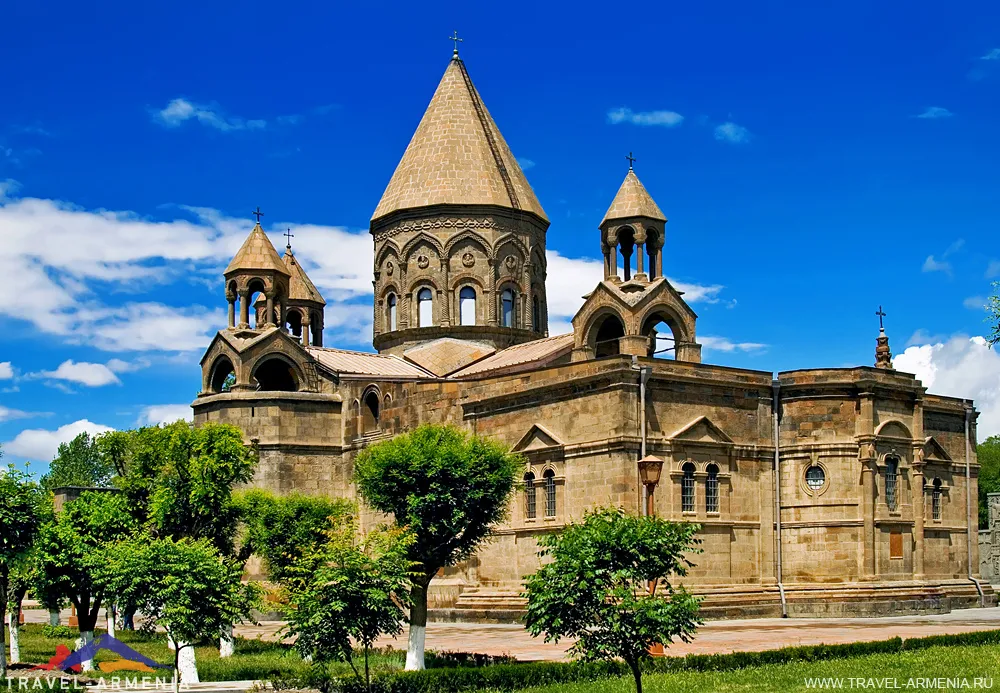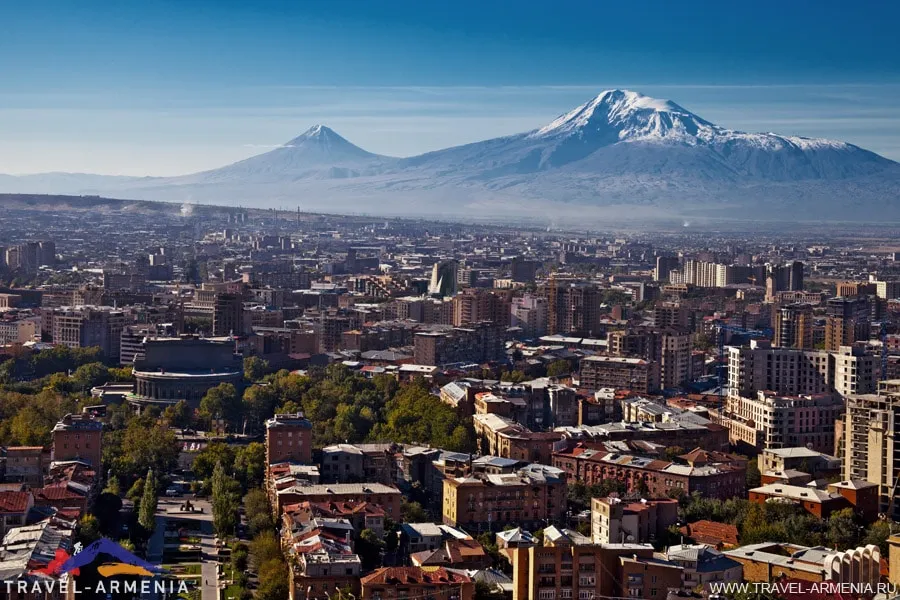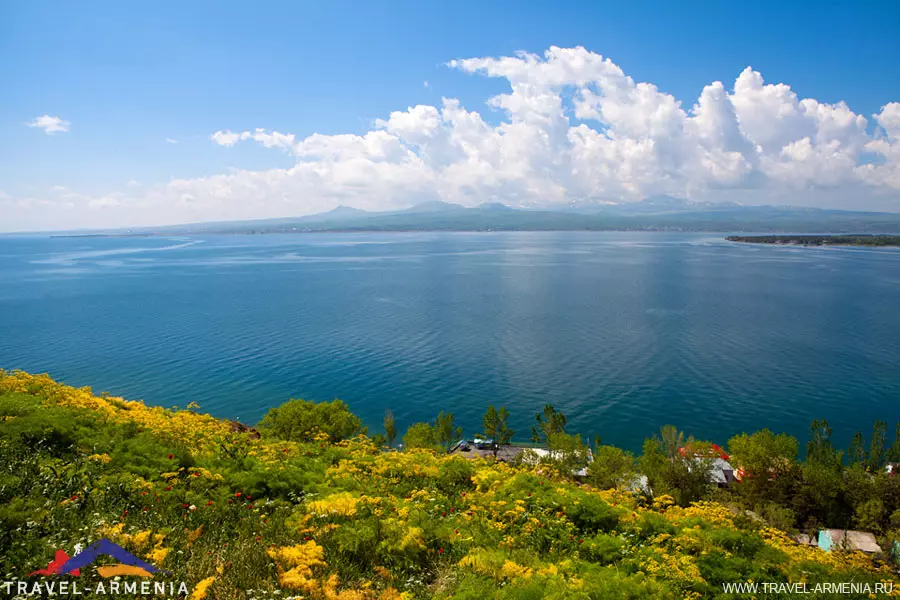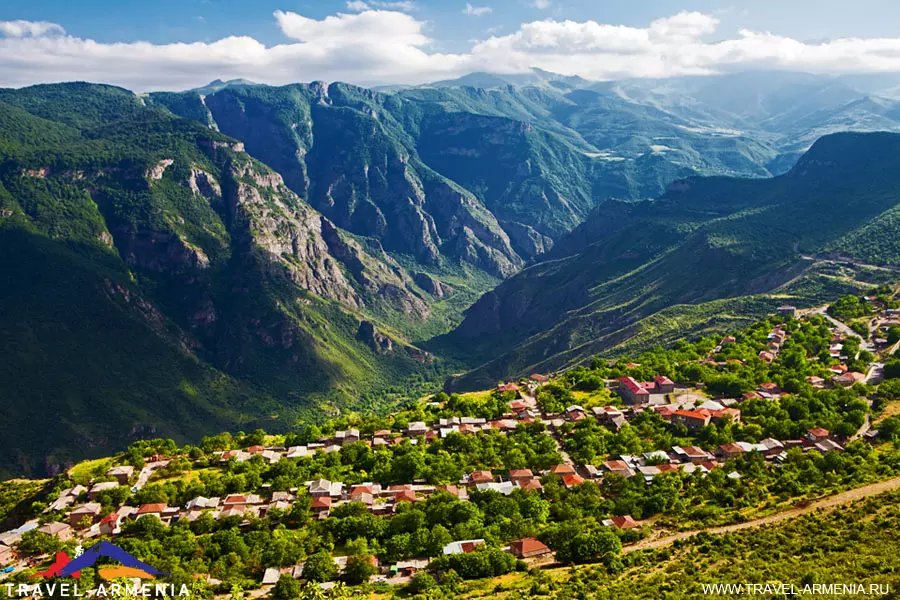Armenia, which reappeared on modern maps as an independent state just over thirty years ago, is also among the most ancient countries in the world. Authors dating back to at least the 5th century BC report information about Armenia under this name, but there are also earlier sources that give it other names.
Over its long history, Armenia has accumulated many amazing treasures, which it hospitably and generously shares with all who wish to experience them. We’ve selected some of the most interesting facts about its history and geography to help you prepare for your visit to this fascinating country.
Collapsing space

Armenia straddles three climate zones: continental, temperate, and subtropical. Large elevation changes and varied topography, combined with the country’s small size and good roads, allow for several “weather changes” within a matter of hours: winters from harsh to mild, summers from sultry to cool.
This same fact has led to an incredible diversity of flora. The number of plant species per square kilometer of Armenian land is one of the highest in the world. This has a beneficial effect on the national cuisine, traditional medicine, and modern cosmetology.
Biblical land

The Ararat Valley, home to Armenia’s capital, Yerevan, was the place Noah saw immediately after leaving the Ark. According to legend, Yerevan was built where the patriarch’s first sight fell. Today, it is one of the oldest continuously inhabited cities in the world. Its formal history began in the 8th century BC with the construction of the Erebuni Fortress.
The still-existing Altar of the Descent of the Lord in Etchmiadzin is also associated with Noah: on it, the patriarch performed the first post-flood sacrifice.
The land of the oldest churches

Armenia was the first state to adopt Christianity. Immediately afterward, at the very beginning of the 4th century, a church was built here, known today as the Etchmiadzin Cathedral. It is the oldest Christian church in the world.
However, the country also contains other active churches, built at the dawn and in the first centuries of “official” Christianity: for example, the church on the grounds of Geghard Monastery (4th century), and the churches of Saint Gayane and Saint Hripsime in Vagharshapat (7th century).
Ararat

Mount Ararat, the five-thousander where Noah’s Ark once landed, remains a national symbol of Armenia even in today’s Turkey.
But beyond its sacred significance for Armenians, this mountain is also a stunningly beautiful visual attraction. It is visible not only from anywhere in the Ararat Valley but also from the mountainous regions surrounding the plain. Ararat literally accompanies travelers, as if watching over them.
Armenian Sea

Lake Sevan is another of Armenia’s natural treasures. It’s one of the largest high-altitude lakes on the planet and the largest in the Caucasus. And, of course, the most beautiful in the world—any Armenian resident will tell you that.
Sevan bears witness to the entirety of Armenian history; along its shores and beneath its waters, numerous settlements, destroyed by time and nature, remain. Some of them are open to the public for inspection and even independent exploration.
Armenian alphabet

Another source of pride for Armenians is the Armenian alphabet. Created by Mesrop Mashtots back in 405, this script allowed the Armenian people to preserve their unity and national identity and continues to preserve their cultural code, testifying to their glorious history.
It’s no coincidence that one of the main attractions in Yerevan, a must-see for every visitor to Armenia, is the Matenadaran Museum of Ancient Manuscripts, home to a vast collection of ancient manuscripts.
The first winemakers

The world’s oldest winery is located in Armenia, near the village of Areni. Winemaking artifacts discovered there include a grape press and fermentation vessels. Judging by the remains of berries, seeds, and vines, it is likely that the grape variety used to make wine here over six thousand years ago was the ancestor of the modern, endemic Areni grape, which is still used in wine production in the region today.
Ancient footwear

The world’s oldest known shoe was also found in Armenia. True, it was only for the right foot. But it was in “perfect” condition: the size 37 cowhide shoe is five and a half thousand years old, and even the lace and eyelets are preserved.
This find is a unique contribution to the study of the everyday life of the ancient world, as it was only possible thanks to an incredible combination of circumstances: physical conditions and microclimate.
An exception to the rule

Cognac production in Armenia began relatively recently—by local standards, in the late 19th century. But it immediately gained fame and the hearts of connoisseurs. Even the strict and principled French allowed Armenian cognac to be labeled as “cognac” in 1900, despite its far from French origins. Whether history or legend, Armenian cognacs have often won top prizes at international exhibitions.
The cognac traditions of that time are still preserved in Armenia today; production technologies and the quality of Armenian cognacs are regulated by a special law.
Armenian coffee

Another “national” drink in Armenia is coffee. This “foreign” beverage has become so ingrained here that it’s impossible to imagine an Armenian who doesn’t drink at least a cup of this invigorating beverage daily. And they drink a lot of it, approximately 67 liters per person per year. Brewed coffee, brewed in a coffee maker, or as it’s beautifully called here, a “jazva,” is popular in Armenia.
Therefore, if you come to Armenia, you’re sure to be invited for a cup of coffee. After all, coffee in Armenia isn’t just an invigorating drink; it’s a reason to get together, sit down, and talk.
Flight over the abyss

Armenia boasts the world’s longest aerial tramway, the Wings of Tatev: nearly six kilometers long. It’s listed in the Guinness Book of World Records, but that’s not why Armenians are so proud.
The most amazing thing about the Wings of Tatev is the experience: soaring above the Vorotan River gorge, captivating views, and a sense of freedom.
It’s precisely for these views and feelings that a tour to Armenia is worthwhile, and we’ll introduce you to this amazing and ancient country.